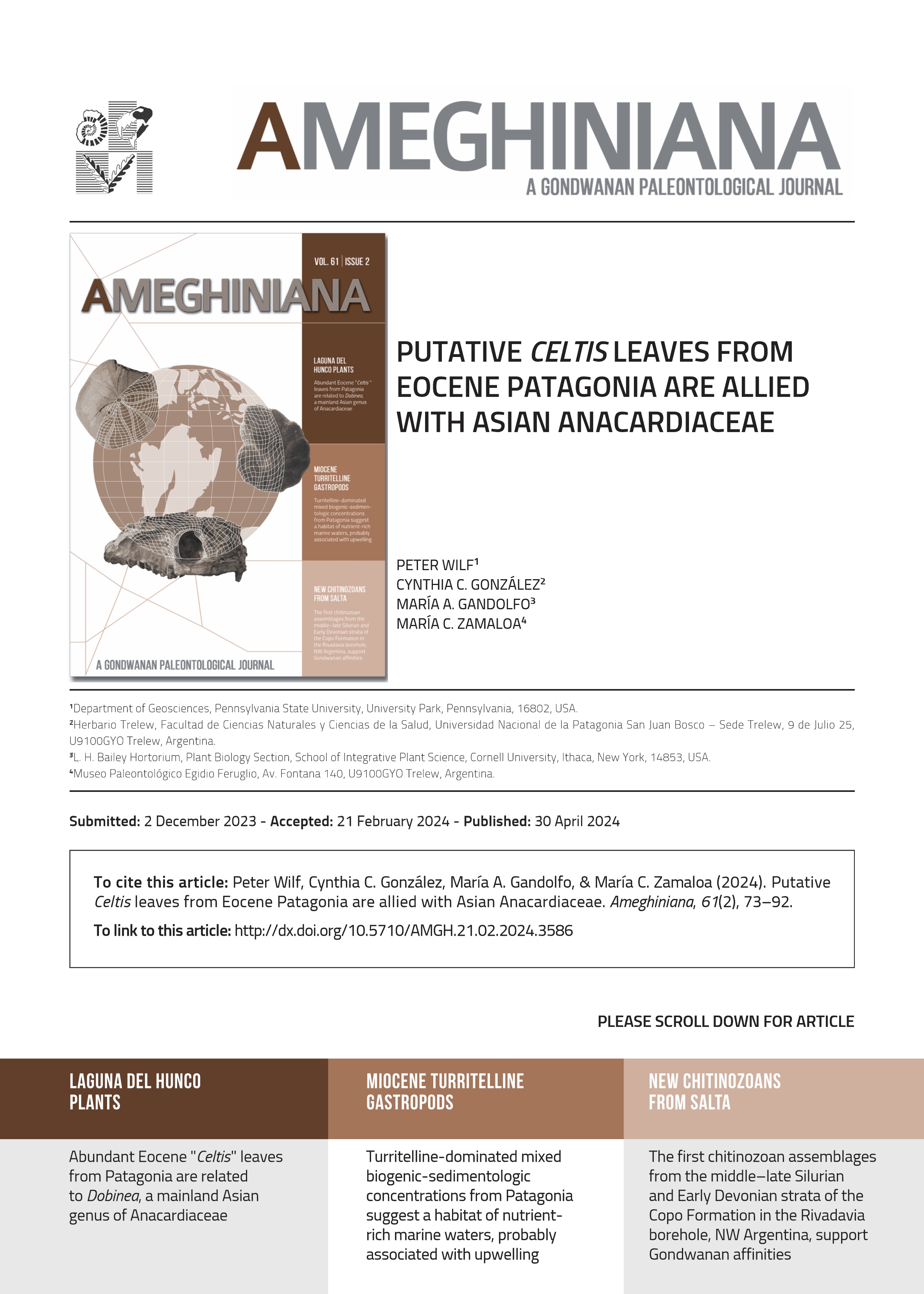PUTATIVE CELTIS LEAVES FROM EOCENE PATAGONIA ARE ALLIED WITH ASIAN ANACARDIACEAE
DOI:
https://doi.org/10.5710/AMGH.21.02.2024.3586Keywords:
Leaf architecture, Anacardiaceae, Chinese flora, Dobinea, Gondwana, Herbivory, Laguna del HuncoAbstract
The most common macrofossils in the highly diverse flora from Laguna del Hunco (early Eocene of Chubut, Argentina) are “Celtis”
ameghinoi leaves, whose true affinities have remained enigmatic for a century. The species accounts for 14% of all plant fossils in unbiased field counts and bears diverse insect-feeding damage, suggesting high biomass and paleoecological importance. The leaves have well-preserved architecture but lack cuticles or reproductive attachments. We find that the fossils only superficially resemble Celtis and comparable taxa in Cannabaceae, Ulmaceae, Rhamnaceae, Malvaceae, and many other families. However, the distinctive foliar morphology conforms in detail to Dobinea (Anacardiaceae), a genus with two species of shrubs and large herbs ranging from India’s Far East and Tibet to Myanmar and central China, and we propose Dobineaites ameghinoi (E.W. berry) gen et. comb. nov. for the fossils. This discovery strengthens the extensive biogeographic links between Eocene Patagonia and mainland Asia, provides the first fossil record related to Dobinea, and represents a rare Gondwanan macrofossil occurrence of Anacardiaceae, which was widespread and diversified in the Northern Hemisphere at the time. The diverse leaf architecture of Anacardiaceae includes several patterns usually associated with other taxa, and many other leaf fossils in this family may remain misidentified.

Downloads
Published
Issue
Section
License
Authors publishing in Ameghiniana have the option of making their article freely available online. Authors opting for the Open Access must pay a fee of $300 (US dollars) to cover article-processing costs and to ensure the article is made open access. Please contact the Production Team after the acceptance of your manuscript if you are interested in making your article Open Access. This option implies by default a license Creative Commons Attribution Non-Commercial-NoDerivs License (CC BY NC ND). If your funding institution requires a different licensing option please communicate this to the Production Team after the acceptance of your manusctipt.










